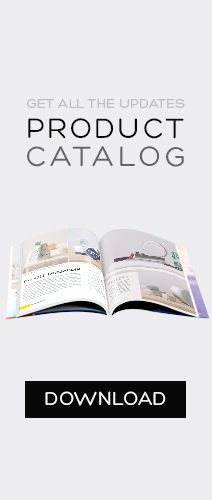The product/package design is like its own medium of communication that connects with consumers. Graphic designers must understand how consumers interpret the design and how it affects purchasing behavior. Here are points to remember about the relationship between packaging design and the target market for premium products.
Design for Fast Moving Consumer Goods (FMCG)
Fast moving consumer goods - also known as consumer packaged goods (CPG) - are often grocery store items that sell quickly at relatively low prices. They include both packaged foods and disposable non-food items like cosmetics. FMCGs are omnipresent in the market and represent over half of all consumer spending. These items are often sold in large quantities and include secondary as well as tertiary packaging.
Since consumers view FMCGs as the norm at grocery stores, premium items need superior packaging that makes them stand out more. While the design for FMCGs can trigger basic emotions, designs for premium packages need to be more subtle. Consumers must feel they are tapping into a special experience in order to show interest in a premium brand.
Premium Cues
The main cues for premium packaging to connect with a high-end market are extraordinary differentiation, high quality of packaging materials, minimalism and authenticity. Extraordinary differentiation is the art of differentiating a premium from a normal product. It requires showing the consumer imagery that profoundly confirms the product is worth the price.
One way to convey extraordinary differentiation for a high quality beverage is to sell it in a unique, artistic bottle. The shape of the bottle should correspond with general perceptions of premium quality. A normal shape that resembles a popular soft-drink bottle will be perceived as conventional, whereas something outside the box will more likely be perceived as innovative or sophisticated.
Connecting Design with Higher Price
In order for consumers to show interest in a premium product, the design must provide comfortable cues that validate the price. When packaging material is perceived as high quality, the consumer tends to view it as a commitment by the manufacturer to deliver a superior quality product. When it comes to packaging candy, plastic is perceived as cheaper, whereas cardboard is associated with premium quality.
 Using Flexibility
Using Flexibility
Even if a designer follows modern guidelines based on consumer psychology, there must still be a degree of flexibility. Not all premium products, for example, work with a minimalistic design. Designers should further be aware that the premium cues that work for food products might not be as effective for non-food products such as cleansing agents. In some cases you many not want the product to be associated with authenticity or craftsmanship.
Many times the designer is not expected to come up with anything revolutionary and instead is asked to come up with a new package design for an existing product. The new design must still connect with the same values that define the target customer.
A Never-ending Challenge
One of the most important challenges for modern packaging designers to understand is that design factors and consumer tastes keep changing. The design guidelines for today might not be as relevant a decade from now. Even though the priniciples involving the communication between the brand and consumer haven't changed much, there's always a need for fresh stimulus.
Even the most respected A-brands must consider design changes once in a while. Premium brands often have fewer competitors to worry about, but it's still possible for loyal customers to grow tired of the same design cues. Maintaining the same identity and values is important, but it's still advantageous to add creative energy to a package to generate renewed or continued interest.

References
[1] "Designing a Premium Package: Some Guidelines for Designers and Marketers(2014)", by Ruth Mugge, Thomas Massink ,Erik Jan HultinkLianne van den Berg-Weitzel





